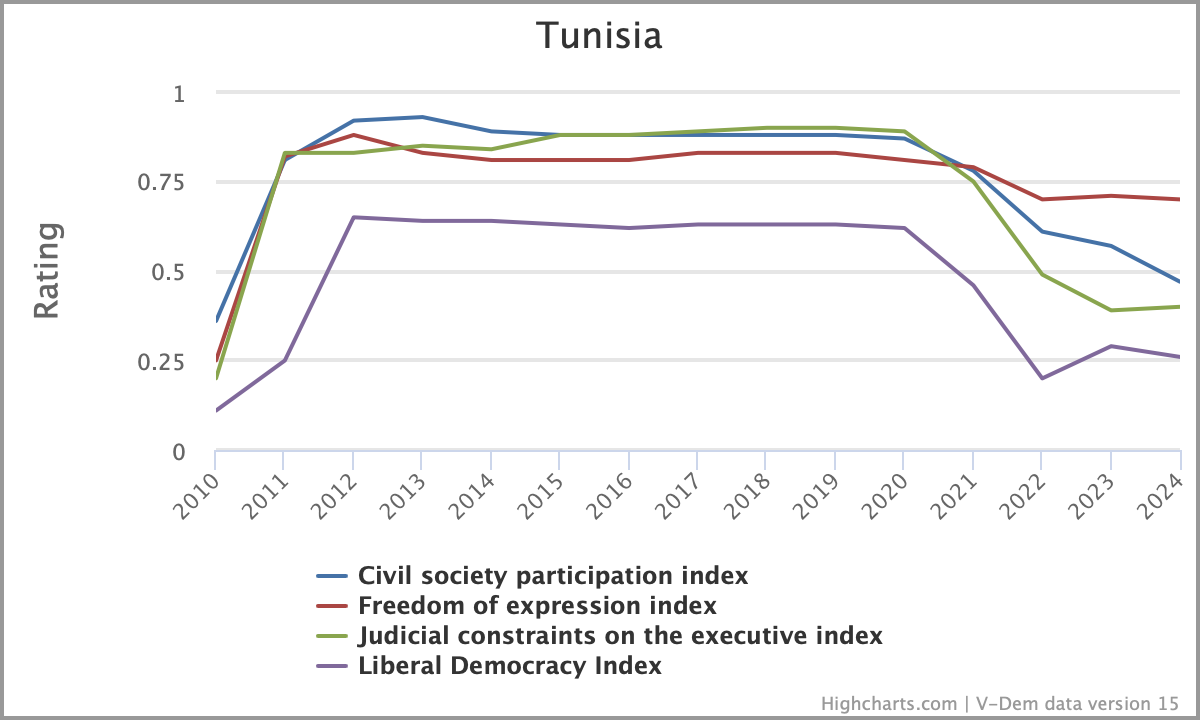From Hope to Backsliding in Tunisia
By: Eirini Paliokosta
Oct 09, 2025
This week’s graph illustrates the democratic reversal in Tunisia from 2010 to 2024. The four indices evaluate democracy on a scale from 0 (absent or weak democratic qualities) to 1 (strong democratic qualities).
Tunisia emerged as the Arab Spring’s democratic success story after the long-term autocratic rule under President Zine El Abidine Ben Ali ended in 2011. A progressive new constitution, political rights and civil liberties, a series of free multiparty elections, separation of powers, and freedom of expression fueled optimism.
However, socioeconomic challenges, corruption, a lack of accountability mechanisms, and unresolved issues in gender inequality challenged Tunisia’s fragile democracy. With Kaïs Saïed winning the presidential elections in 2019, he gradually steered Tunisia into democratic backsliding. He used the COVID-19 pandemic to expand executive power, culminating in a self-coup in July 2021.
In 2022, the Tunisian President revised the constitution to reinforce the presidency’s powers. Since then, the independence of the judiciary has eroded, while political opponents, journalists, and dissent voices have faced increasing persecution.
The latest blow further deepening Tunisia’s authoritarian turn came in 2025 when Saïed’s government dissolved the National Authority for Access to Information (INAI), an independent body established to guarantee the public’s and journalists’ access to official information, severely undermining transparency and oversight.


